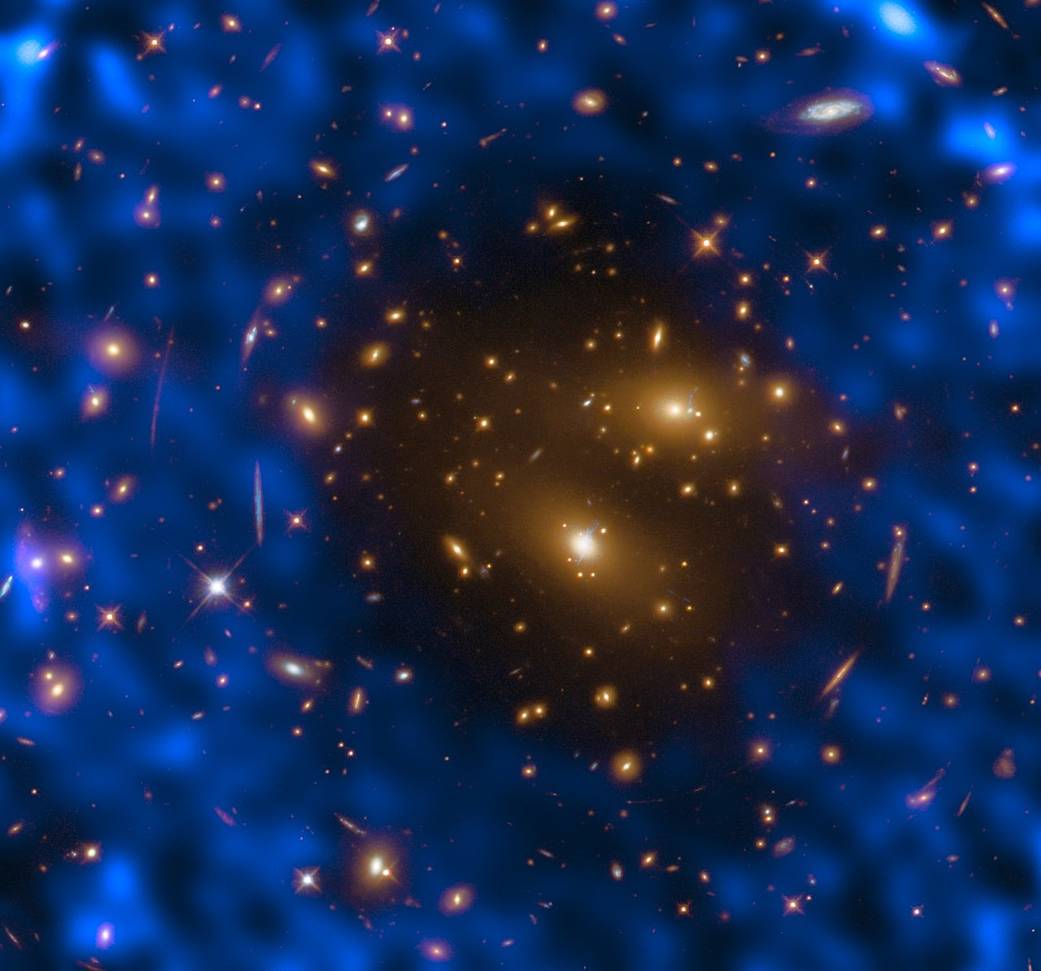Monster Galaxy Cluster Sheds Light on Cosmic Microwave Background (Image)

One of the largest galaxy clusters ever seen shines bright in this image from the Hubble Space Telescope. Called RX J1347.5-1145, this cluster lies 5 billion light-years from Earth.
Hubble's observations of this galaxy cluster helped astronomers at the Atacama Large Millimeter/submillimeter Array (ALMA) in Chile to probe the secrets of the cosmos by watching how it interacts with the cosmic microwave background (CMB) — weak radiation left over from the Big Bang, when the universe as we know it was born.
The entire cosmos bears witness to the disruptive events surrounding the Big Bang. Marks left behind by the rapid expansion of space-time can be found by studying the universe's most ancient light, the CMB. These 14 billion-year-old photons, or particles of light, now permeate the cosmos and can be used to learn about the universe via a phenomenon known as the Sunyaev-Zel'dovich effect. [The Cosmic Microwave Background in Pictures]
Microwave radiation is invisible to the human eye, but astronomers can detect it. The microwave photons that create the CMB travel through the universe to Earth. "On their journey to us, they can pass through galaxy clusters that contain high-energy electrons," NASA officials said in a statement. Passing through areas containing high-energy electrons can give these ancient photons get a little energy boost.
"Detecting these boosted photons through our telescopes is challenging but important," NASA officials said. "They can help astronomers to understand some of the fundamental properties of the universe, such as the location and distribution of dense galaxy clusters."
After ALMA observed the CMB around the galaxy cluster RX J1347.5-1145 (shown in blue), astronomers combined that data with an image from the Cluster Lensing and Supernova survey with Hubble (CLASH) to make this picture. Combining the visible-light image from Hubble with the invisible microwave data from ALMA helps astronomers understand how the CMB interacts with the galaxies inside the colossal cluster.
You can follow us @Spacedotcom and on Facebook & Google+. Original story on Space.com.
Get the Space.com Newsletter
Breaking space news, the latest updates on rocket launches, skywatching events and more!
Join our Space Forums to keep talking space on the latest missions, night sky and more! And if you have a news tip, correction or comment, let us know at: community@space.com.

Christine Lunsford joined the Space.com team in 2010 as a freelance producer and later became a contributing writer, covering astrophotography images, astronomy photos and amazing space galleries and more. During her more than 10 years with Space.com, oversaw the site's monthly skywatching updates and produced overnight features and stories on the latest space discoveries. She enjoys learning about subjects of all kinds.









